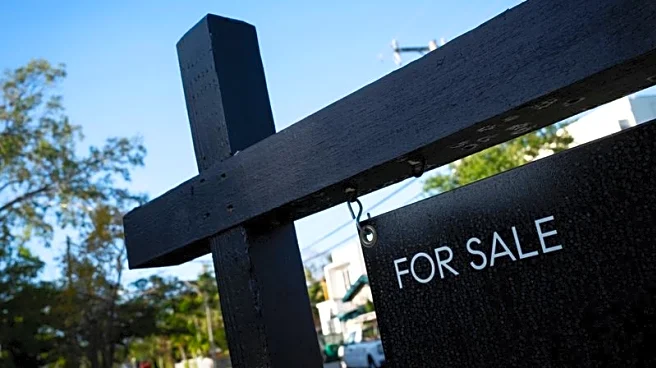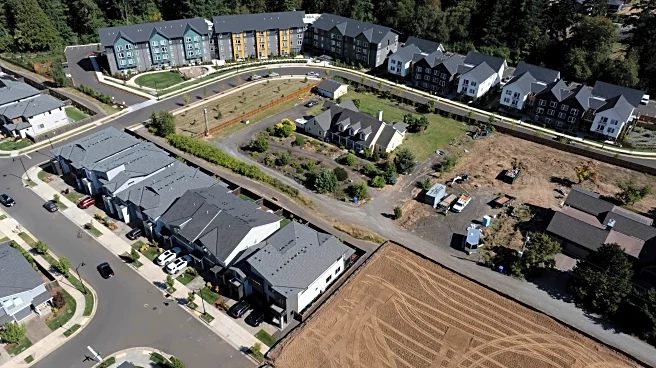What's Happening?
The U.S. housing market has experienced a notable decline in home values over the past year, with 53% of homes seeing a decrease in their 'Zestimates', according to Zillow. This marks the highest percentage of value loss since the aftermath of the Great Recession. The decline is most pronounced in the West and South regions, with cities like Denver, Austin, and Sacramento experiencing significant drops. The average drawdown in home values has reached 9.7%, a substantial increase from 3.5% in the spring of 2022. This trend is attributed to the Federal Reserve's rate hikes in 2022 and 2023, which have increased borrowing costs and discouraged homeowners from refinancing. Despite these declines, Zillow data indicates that homeowners are still ahead,
with values up a median 67% since the last sale.
Why It's Important?
The decline in home values has significant implications for the U.S. housing market and economy. High mortgage rates have deterred potential buyers, leading to a shift from a seller's market to a buyer's market. This has resulted in increased delistings as sellers withdraw their homes from the market due to offers below asking prices. The National Association of Realtors predicts a turnaround in 2026, with existing-home sales expected to rise by 14% and new-home sales by 5%. This anticipated recovery could stabilize home prices and reinvigorate the housing market, impacting economic growth and consumer confidence.
What's Next?
Looking ahead, the housing market may see a resurgence in sales and home prices as predicted by the National Association of Realtors. This could lead to increased activity in the real estate sector, benefiting both buyers and sellers. However, the market's recovery will depend on various factors, including interest rates and economic conditions. Stakeholders such as real estate agents, homeowners, and potential buyers will need to monitor these developments closely to make informed decisions.
















